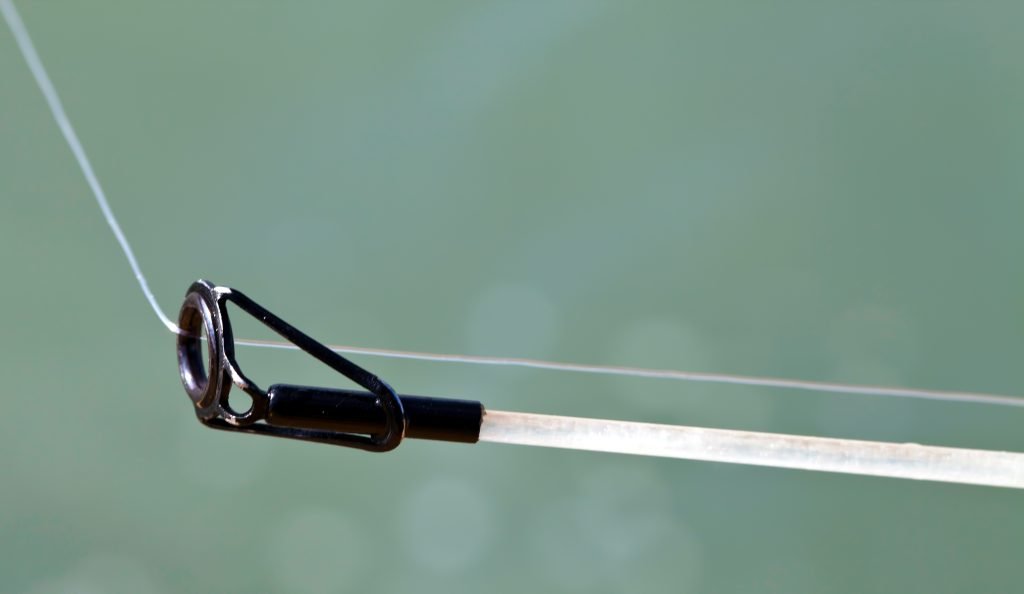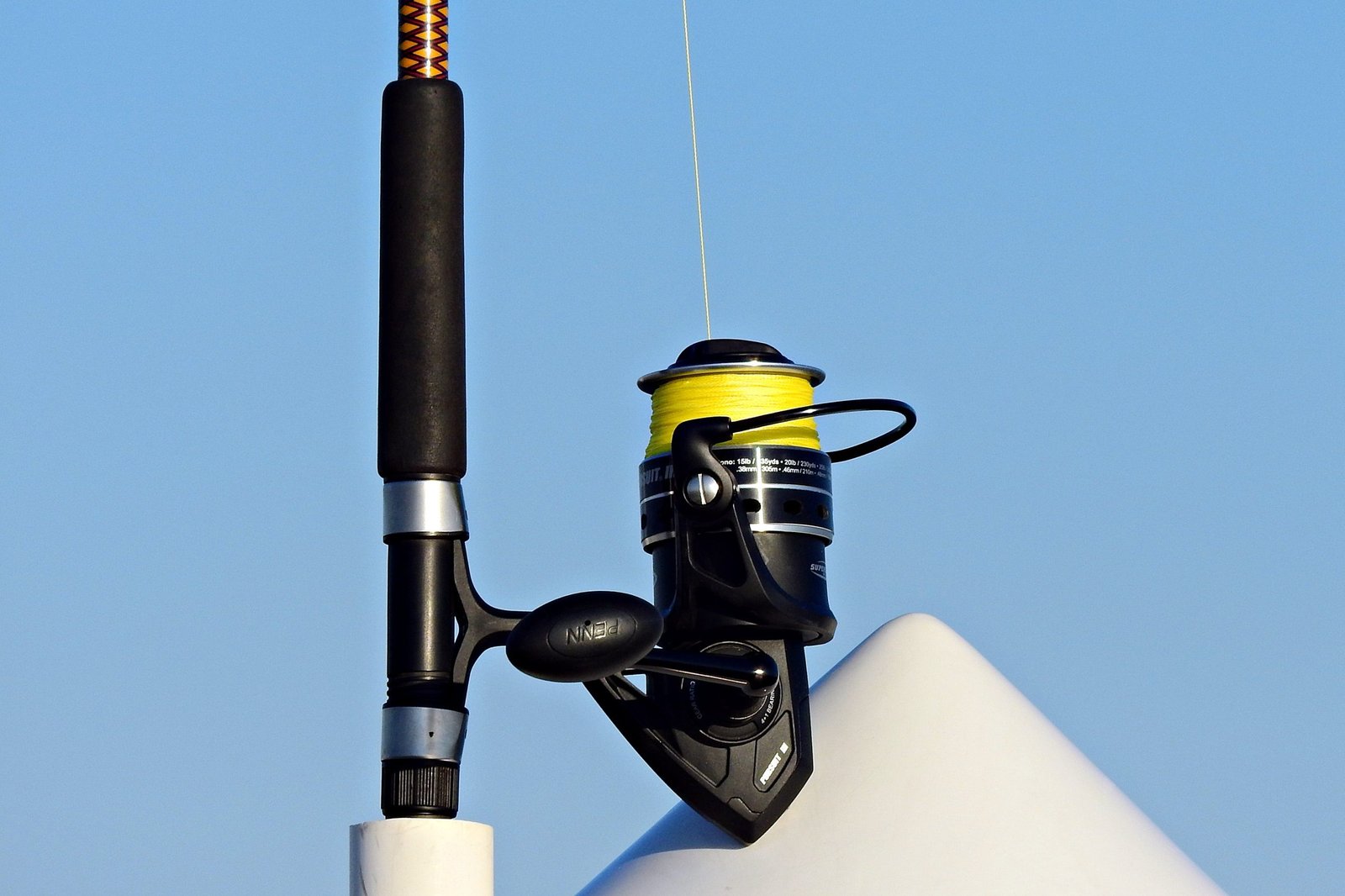
When it comes to fishing lines, there are many options to choose from, but fluorocarbon lines have been gaining popularity among anglers. They are known for their low visibility, high sensitivity, and abrasion resistance. These qualities make them an excellent choice for catching more fish in various conditions, especially for finesse techniques.
For those in a hurry, Seaguar Tatsu is one of the best fluorocarbon fishing lines available in the market. It has excellent knot strength, high sensitivity, and is virtually invisible in water. The line is made from a double-structure fluorocarbon material that provides superior abrasion resistance and strength. It is also available in different spool sizes, making it suitable for different fishing styles.
Another excellent option is the Sunline Shooter Fluorocarbon. This line is known for its high sensitivity, which allows you to feel even the slightest bites. It also has a high abrasion resistance, making it suitable for fishing in rocky areas.
Without further ado, let’s discover the best fluoros on the market and some more information about this type of line.
Best Fluorocarbon for Freshwater Fishing
))/3275167.json)
For freshwater fishing, I recommend using Seaguar Tatsu fluorocarbon line. This line is known for its high sensitivity and low stretch, which makes it perfect for detecting light bites. It also has excellent knot strength and abrasion resistance, which is important when fishing in rocky or wood-filled areas. I know, when you look at the price it seems out of this world, but this unbelievably strong yet soft line, paired with the fact that it holds almost no memory justifies it it. Once you spool it on whatever reel you want, it will stay there for quite some time.
))/2238549.json)
Another low memory, smooth fluoro line is the Sunline Super FC Sniper. This is for those who don’t want to spend $40 on fishing line, but still want a fluorocarbon line that will do its job well. For half the price, you get a strong but sensitive line that will help you with those long and accurate casts. The Super FC Sniper is versatile for freshwater applications, whether you’re targeting bass with finesse tactics or fishing for walleye with a bottom-bouncing rig.
There are cheaper options, but below this price you are going to find some low quality options that won’t show what fluorocarbon is really capable of. If you don’t want to spend this much, just stick to a good monofilament or braid.
Best for Saltwater Fishing
))/2674195.json)
For those who like to use fluorocarbon in saltwater, I recommend using the Seaguar InvizX. Why is it good for saltwater? It’s UV resistant, which is one of the most important features to look for in a saltwater line. Despite its softer nature, InvizX still offers excellent abrasion resistance and tensile strength, which are critical for saltwater applications.
Another great option is the Berkley Trilene 100% fluorocarbon line, which is known for its strength and shock resistance.
Best for Heavy Cover and Structure

When fishing in heavy cover and structure, it’s important to use a fluorocarbon line that can handle the pressure. I recommend using Seaguar AbrazX, which is known for its exceptional knot strength and abrasion resistance.
As the name might suggest, this line can handle heavy cover and structure without breaking, which is important when targeting big fish. When you get snagged badly, this line probably won’t break, but the crankbait bill or the hooks.
Now that we’re done with the recommendations, keep reading to discover some more about fluorocarbon line in general.
How It’s Made and Important Properties
Fluorocarbon fishing line is a type of polymer line that is made up of a combination of fluorine, carbon, and sometimes other materials. It is known for its high strength, abrasion resistance, and low visibility in water.
One of the key properties of fluorocarbon line is its refractive index, which is very similar to that of water. This means that it is virtually invisible underwater, making it a great choice for fishing in clear water or when targeting finicky fish that are easily spooked.
Fluorocarbon line is also denser than water, which means that it sinks quickly and stays on the bottom where the fish are. This makes it a good choice for bottom fishing or for use with lures that require a sinking presentation.
Another important aspect of fluoro line is its waterproof nature. Unlike monofilament line, which absorbs water and becomes weakened, fluorocarbon line does not absorb water and maintains its strength and performance even when wet.
Advantages Over Monofilament and Braid
Compared to monofilament and braided fishing lines, fluorocarbon line has several advantages.
Aside it’s invisibility, fluorocarbon line is much more resistant than monofilament line, which makes it a better choice for fishing around rocks, logs, and other structures that can cause line damage.
It also has a higher strength-to-diameter ratio than monofilament line, which means that it is stronger for its size. This can be an advantage when fishing for larger fish or when using lighter tackle.
While braided line also has some advantages over fluorocarbon line, such as its high strength and sensitivity, it is much more visible in water and can be more difficult to tie knots with.
Overall, fluorocarbon line is a great choice if you want a strong, invisible, and abrasion-resistant fishing line that performs well in a variety of fishing situations.
Frequently Asked Questions
What characteristics define high-quality fluorocarbon lines for saltwater fishing?
When selecting a fluorocarbon line for saltwater fishing, it is important to consider the line’s strength, abrasion resistance, and sensitivity. A high-quality fluorocarbon line will be able to withstand the harsh conditions of saltwater fishing, including exposure to salt and sand, and the impact of large fish. Additionally, a good saltwater fluorocarbon line should be highly sensitive to detect even the slightest bites from fish.
Which fluorocarbon lines are preferred by professional bass anglers?
Professional bass anglers prefer fluorocarbon lines that have a high level of sensitivity and low visibility in the water. This allows them to detect even the slightest bites from fish and increase their chances of a successful catch. Some of the most popular fluorocarbon lines among professional bass anglers include Seaguar Tatsu, Seaguar AbrazX, and Sunline Super FC Sniper.
How does fluorocarbon line visibility affect its performance in fishing?
Fluorocarbon line visibility can have a significant impact on its performance in fishing. Fluorocarbon lines that are less visible in the water are more likely to attract fish, as they are less likely to scare them away. Additionally, less visible fluorocarbon lines can increase the chances of a successful catch, as fish are less likely to detect the line and avoid the bait.
What are the advantages of using fluorocarbon lines for baitcasting reels?
Fluorocarbon lines are ideal for baitcasting reels because they are highly sensitive and have low stretch. This allows for better control and accuracy when casting, as well as increased sensitivity to detect bites from fish. Additionally, fluorocarbon lines have low visibility in the water, which can increase the chances of a successful catch.
How do you select the best fluorocarbon leader for various fishing conditions?
When selecting a fluorocarbon leader for various fishing conditions, it is important to consider the size and type of fish you are targeting, as well as the fishing environment. A heavier fluorocarbon leader is ideal for larger fish, while a lighter leader is better for smaller fish. Additionally, the length of the leader should be adjusted based on the clarity of the water and the size of the fish.
What are the key factors to consider when choosing a fluorocarbon line for freshwater versus saltwater fishing?
When choosing a fluorocarbon line for freshwater versus saltwater fishing, it is important to consider the line’s strength, abrasion resistance, and sensitivity. Freshwater fishing typically requires a lighter line, while saltwater fishing requires a heavier line that can withstand the harsh conditions of the ocean. Additionally, freshwater fishing typically requires a more sensitive line to detect bites from fish, while saltwater fishing requires a line that is less visible in the water.
As an Amazon Associates member, I might earn a commission when you buy through the links on this page, at no additional cost to you. Thanks for helping me do what I like.




